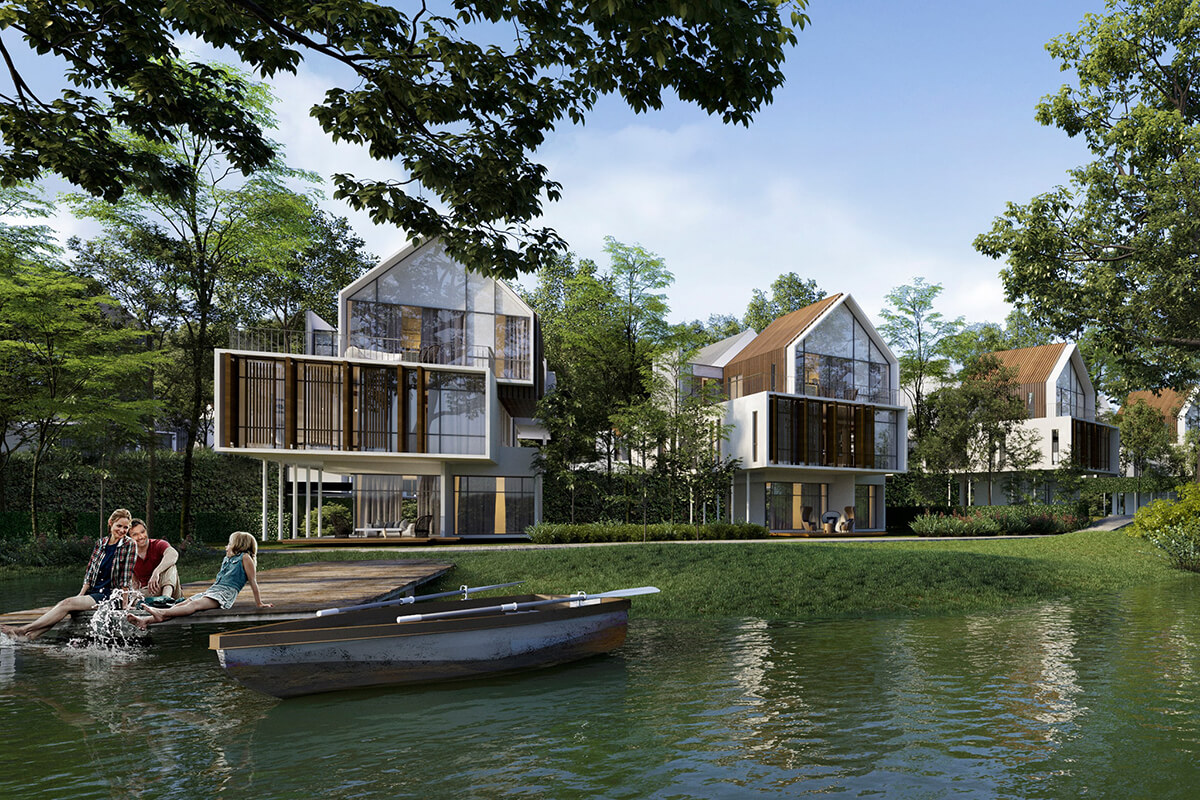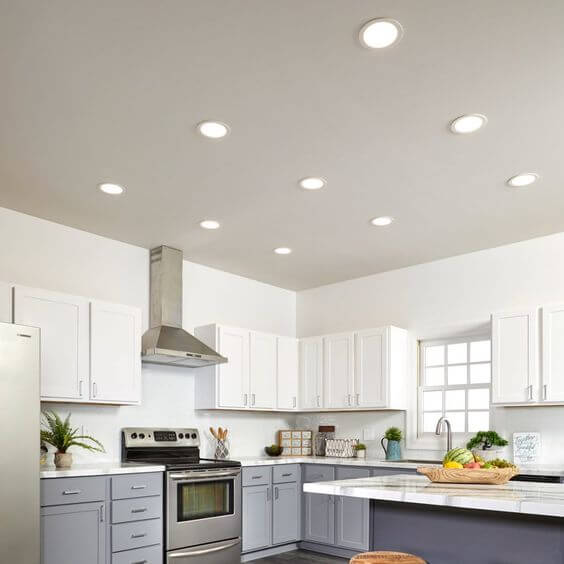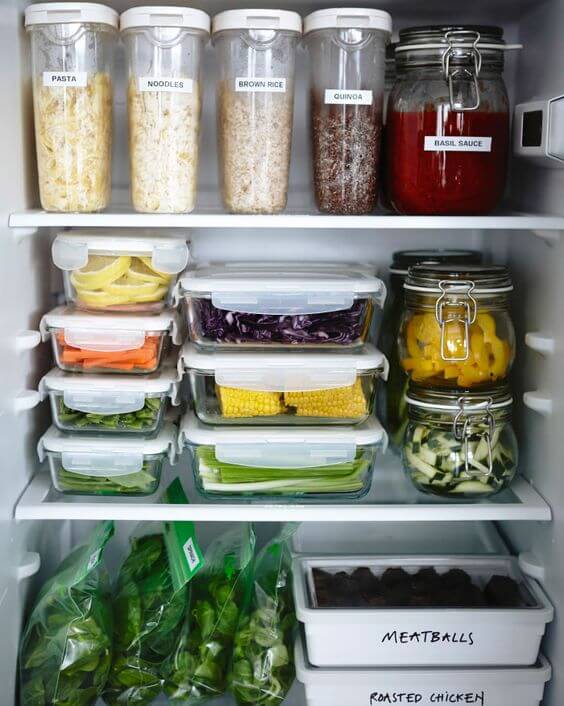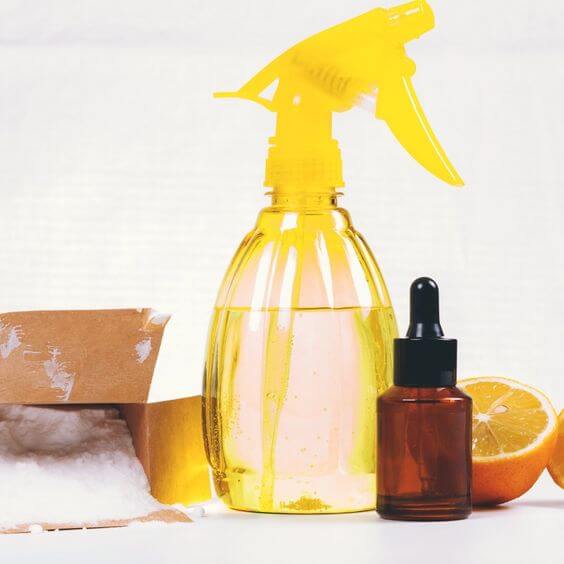
Source: Gamuda Cove
The urban population in Malaysia has increased from 24.8 million in 2019 to an estimate of 25.3 million in 2020. With more people choosing to reside in the city, there is a need to encourage city residents to turn their apartment, condominium or landed residential properties into “green homes”. Many people think an eco-friendly house should be made from sustainably sourced building materials. However, there is more to it than just building materials. Taking care of our environment can begin in any type of living space. Here are four eco-friendly ways for a greener, city living.

Source: Pinterest
1. Use Energy-Efficient Lighting
Energy efficiency is part of the green home concepts that emphasises on doing more, but using less energy and being cost-effective. Lighting energy consumption in public buildings and residential homes can be reduced by choosing the right energy-efficient light bulbs. In response to the Malaysian government’s move to reduce around 40% of carbon intensity by 2020, the sale of traditional incandescent light bulbs or “round bulbs” are phasing out in stages. Due to the incandescent bulb’s high energy consumption and the excessive release of heat energy, more people are turning to lighting alternatives such as Light Emitting Diodes (LED), Compact Fluorescent Lamps (CFL) and halogens. Among these light bulbs, LEDs are the most energy-efficient and cost-saving for your household. Although they are expensive in the beginning, the initial cost will recover because of their long-term usage. In terms of brightness, LED bulbs are much brighter and energy-saving than traditional incandescent or halogen bulbs of the same wattage. As for the curlicue CFL light bulbs, they share a similar brightness with LED bulbs based on the lumen output. However, CFLs produce more energy than LEDs to generate that same level of brightness as emitted by LED bulbs. In the long run, residents will save more on electricity bills with these longer lifespan LEDs in their green eco homes.

Source: Pinterest
2. Upgrade to Lower-Energy Electrical Appliances
Every home is filled with electronic gadgets and home appliances. From refrigerators to washing machines, it is recommended to look for the ones that have energy-efficient features which can make your home function more efficiently. For example, the introduction of Chlorofluorocarbon (CFC)-free gas cooling system in modern refrigerators and freezers has led to reduced energy consumption, increased insulation and improved compressors. CFCs are man-made greenhouse gases that potentially deplete the protective ozone layer. As a result, it exposes more people to ultraviolet (UV) radiation which can cause skin cancer. Energy-efficient refrigerating appliances incorporate good insulation technology to replace the use of CFC which can be found in decade-old models that are more energy-consuming. Another example of heavily-used home appliances are washing machines. Old, poorly maintained washing machines consume more electrical and heat energy if you continue to use them. By replacing them with new, energy-saving washing machines, you can utilise the cold wash cycle for most of your washing to reduce energy use. Also, consider a front loader washing machine which uses less water than a top loader washing machine. By upgrading to energy-efficient appliances, residents will save on monthly bills and reap the benefits of advanced features in their eco-friendly homes.

Source: Pinterest
3. Opt for Natural Cleaning Products
Residents commonly suffer from allergies, asthma and sinusitis within the four walls of their city homes. One of the factors that contribute to such ailments is the use of commercial cleaning products. These cleaners are incorporated with toxic and polluting substances which cause long-term health concerns as well as environmental pollution due to a lack of a specialised disposal system. That being said, homemade or store-bought natural cleaning products are safer, healthier alternative cleaners for those who want to turn their living spaces into environmentally-friendly houses or apartments. For a start, switching to a gentle cleaning routine using non-toxic products may significantly relieve allergy symptoms. Even though it is good to keep your home dust-free, excessive cleaning with chemicals linked to allergies and asthma can actually make them worse. Thus, it is important to check the list of ingredients used in both commercial and semi-natural cleaning products before purchasing. Prior to applying cleaning formulations on main surfaces and furniture, test them in small, hidden areas first. If you are making homemade cleaning products, remember to have them labelled and store them away from the reach of your children.

Source: Horizon Hills
4. Have Indoor Plants in Your Home
Decorating your home with indoor plants is the main part of green home designs. Having indoor plants makes the living space vibrant and conducive. They are aesthetically-pleasing and certain plants have air-purifying properties. Some houseplants can clean and increase the moisture levels in the air as well as reduce carbon dioxide and pollutants like nitrogen dioxide and benzene. Not a fan of hot weather? Plants have the ability to cool down rooms! What happens is they lose water during transpiration which subsequently cools the air around them. Before bringing home a pot of plant, it is good to know beforehand the suitable types of plants that you can grow and maintain indoors. For example, houseplants like succulents and cacti are low maintenance plants while leafy plants require daily watering and adequate lighting to thrive. With all these benefits, it is highly recommended for everyone to have indoor plants for a healthier, happier living space.
As global citizens, we have a duty to protect and upkeep our natural surroundings with eco-friendly initiatives. By respecting nature and the environment, we can become a community that strives to make the place where we live a clean, safe environment for everyone while staying connected to Mother Nature.
Recommended Reads
Suburban Living : Connecting With Nature During the Pandemic


